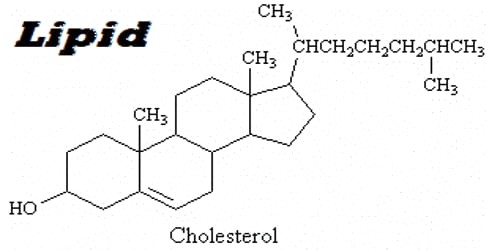PERFORMANCE APPRAISAL
The etymological meaning of the term performance is doing or causing to be done of a thing of part thereof. It refers to the outcome of the behavior of employees. When this term “performance” is applied in case of an employee to appreciate or judge his/her performance then it is known as performance appraisal.
According to Gary Desler, “Performance appraisal may be defined as any procedure that involves—
- Setting work standards;
- Assessing the employees actual performance relative to these standards; and
- Providing feedback to the employee with the aim of motivating that person to eliminate performance deficiencies or to continue to perform above part.”
Performance appraisal encompasses compensation, promotion, transfers, revision, and so on. It is argued by some others that—
“Performance is what should be emphasized in appraisal because this is what the individual contributes.”
Performance appraisal is a form of control, which is used by corporate to accomplish their pre-determined objectives. Appraisal process provides accurate information; provide necessary incentive to motivate people to work hard to reach the desired objectives.
So performance appraisal is very essential to find out the best performance and also performer and vice-versa. This method is probably the single most effective way to determine the causes of success or failure of an organization. It also helps to assess different programs, selecting different ways of organizing work.
Benefits of performance appraisal:
Performance appraisal is the process of comparing subordinates’ actual performance to the standards that have been set. The main objectives of performance appraisal are as follows:
- To ensure optimum utilization of allocate resources and also development of human resources.
- To control employee behavior by using reward, punishment and threat system.
- To identify clear goals and roles for the employees.
- To identify and eradicate weakness and to appreciate strong points of the employees.
- To motivate employees by using reward system.
- To know where the employees stand vis-à-vis the company and the owner.
- To gather information on employees to aid decisions on personnel areas like placement, promotion, transfer, training and normal or merit increments etc.
- To promote interpersonal relation between the employees and supervising officers.
- To comply with equal employment opportunity regulations.
- To develop an organizational culture of mutually openness, trust, and mutual respect for achieving organizational goals.
These benefits make performance appraisal system important in business world to find better successes in business life.
Appraisal Process:
Performance appraisal follows a particular structure. This structure exists to facilitate the documentation process that often allows for some sort of quantifiable evaluation. Performance appraisal process involved six steps. These are—
- Establish performance standard with employees,
- Mutually set measurable goals,
- Measure actual performance,
- Compare actual performance with standards.
- Discuss the appraisal with the employees,
- If necessary, initiate corrective action.
These steps are very important to make the appraisal process effective and efficient. These are describe below—
Establish performance standard with employees:
The appraisal process begins with the establishment of performance standards. Performance standard should be established in accordance with the organization strategic goals, and also be clear and objective enough to be understood and measured.
Mutually set measurable goals:
Both employees and employers must be agreed to be specific job performance measures. After establishment of performance standards, it is necessary to communicate the expectation.
Measure actual performance:
The 3rd step in the appraisal process is the measurement of performance. It is necessary to acquire information to determine actual performance. We should be concerned with how and what we measure. These are four sources of information to measure actual performance. These are—
- Personal observation,
- Statistical reports,
- Written report,
- Oral reports.
Combinations of this information’s increase both the number of input sources and the probability of receiving reliable information.
Compare actual performance with standards:
The 4th step in the appraisal process is the comparison of actual performance with standards. The point of this step is to note deviation between standard performance and actual performance so that we can proceed to the 5th step in the process.
Discuss the appraisal with the employee:
In this step, appraiser presents an accurate assessment to the employee. It is very difficult task because the evaluation of one’s ability and contribution has great impact on their self-esteem and performance.
Initiate corrective action:
The final step is the identification of corrective action where necessary. Corrective action can be two types:
- One is immediate and deals predominantly with symptoms. Immediate action corrects something right now and gets things back on track. It is often describe as “putting out fires”.
- Other is basic and delves into causes. Basic corrective action gets to the sources of deviation and seeks to adjust the difference permanently. In some instances, appraiser may rationalize that they do not have the time to take basic corrective action and then take immediate action.
Performance appraisal is an integral part of most organizations. Properly developing and implementing above steps, the performance appraisal process can help an organization achieve its goals.
Who make the appraisal:
Appraisals are made by superiors, peers, subordinates and self.
Superior’s appraisal:
Usually, an appraisal is done by the immediate supervisors who are in a position to comment or evaluate the performance of the subordinates. This type of appraisal is done in most of the cases.
Peer’s appraisal:
Peer’s appraisal is generally dependent on the prevailing interpersonal relations in the organization. Here the peers make the appraisals. As argued by Yoder and Staudohar. “Peer’s” may overemphasize the interpersonal aspects of job performance, and their evaluation may be little more than a popularity contents.
Subordinate’s appraisal:
Appraisal by subordinates may provide useful information about performance of the superiors since the subordinates are observing the day today activities of the superiors.
Self-appraisal:
Self appraisal is another possibility for performance appraisal. Here employees comments on their own performances. Problem with this type of appraisal is that people with high esteem tend to rate them self very high.
Methods of performance appraisal:
Performance appraisal is generally conducted with the aid of a predetermined and formal method. Different methods of performance appraisal are shown below—
- Graphic Rating Scale Method,
- Alternation Ranking Method,
- Paired Comparison Method,
- Forced Distribution Method,
- Critical Incident Method,
- Behaviorally Anchored Rating Scales, and
- The Management by Objectives Method.
These are described below—
Graphic Rating Scale Method:
The graphic rating scale is the simplest and most popular technique for appraising performance. Graphic rating scale is a scale that lists a number of traits and a range of performance for each. The employee is then rated by identifying the score that best describes his or her level of performance for each trait. The main advantage of this method is it provides a quantitative rating for each employee. On the other side, halo effect, central tendency and also other things make an unclear sense of the result.
Alternation Ranking Method:
Ranking employees from best to worst on a trait or traits is the alternation ranking method. This is easier to distinguish between the worst and best employees that to rank them. The main advantages of this method are it avoids central tendency and other problems that occur in the graphic rating scale. But it has also some limitation. It can cause disagreements among employees and may be unfair if all employees are, in fact, excellent.
Paired Comparison Method:
Paired comparison method refers ranking employees by making a chart of all possible pairs trait and indicating which the better employee of the pair is. The paired comparison method helps make ranking method more precise. For every trait, every subordinate is paired with and compared to every other subordinate.
Forced Distribution Method:
The forced distribution method is similar to grading on a curve. With this method, predetermined percentages of rates are placed in performance categories. For example, one may decide to discuss employees as follows
# 15% high performers,
# 20% high-average performers,
# 30% average performers,
# 20% low-average performers,
# 15% low performers.
Critical Incident Method:
This method refers to keep a record of uncommonly good or undesirable examples of an employee’s work-related behavior and reviewing it with the employee at predetermined times. This method can always be used to supplement another appraisal technique and in that role it has several advantages. These are—
- It provides with the specific hard facts for explaining the appraisal.
- It ensures that the supervisor thinks about the subordinate’s appraisal all during the year because the indicators must be accumulated therefore.
- The rating does not just reflect the employees’ most recent performance.
- Keeping a running list of critical incidents should also provide concrete examples of that specifically the subordinate can do to eliminate any performance deficiencies.
Behaviorally Anchored Rating Scales:
A BARS combines the benefits of narratives critical incidents and quantified ratings by anchoring a quantified scale with specific behavioral examples of good or poor performance. Developing BARS typically requires the following five steps:
- Generate critical incidents: Person who knows the job being appraised is asked to describe specific illustrations of effective and ineffective performance.
- Develop performance dimensions: These people then cluster the incidents into a smaller set of performance dimensions. Each cluster is then defined.
- Reallocate incidents: Another group of people who also know the job then reallocate the original critical incidents. They are given the clusters’ definitions and the critical incidents and area asked to reassign each incident to they think it fits best.
- Scale the incidents: This second group is generally asked to rate the behavior described in the incident as to how effectively or ineffectively it represents performance on the appropriate dimension.
- Develop final instrument: A subset of the incidents is used as behavioral anchors for each dimension.
There are also some advantages of this method. These are—
- It standard is more clear than other method,
- It provides feedback,
- More accurate gauge,
- It is more consistent than others,
- All dimensions are independent.
















